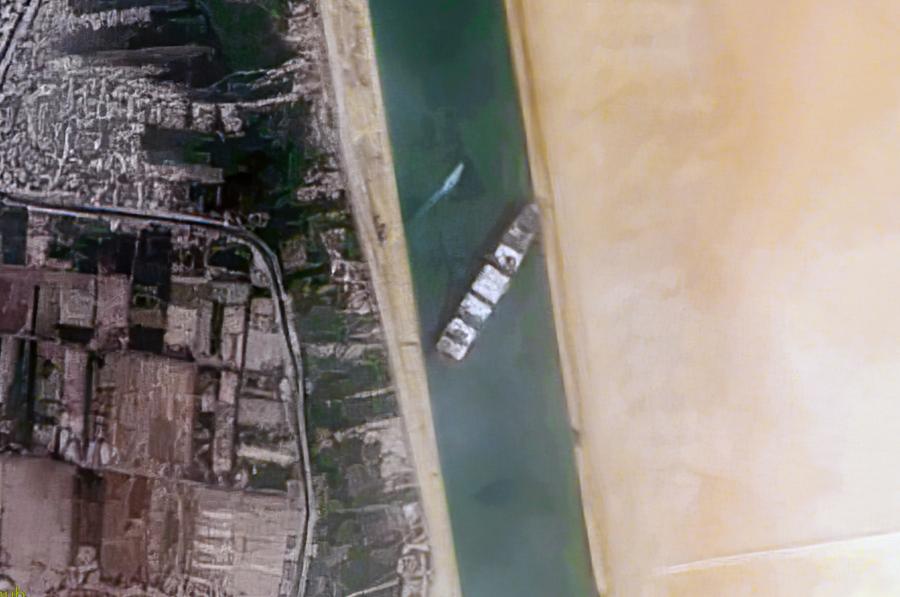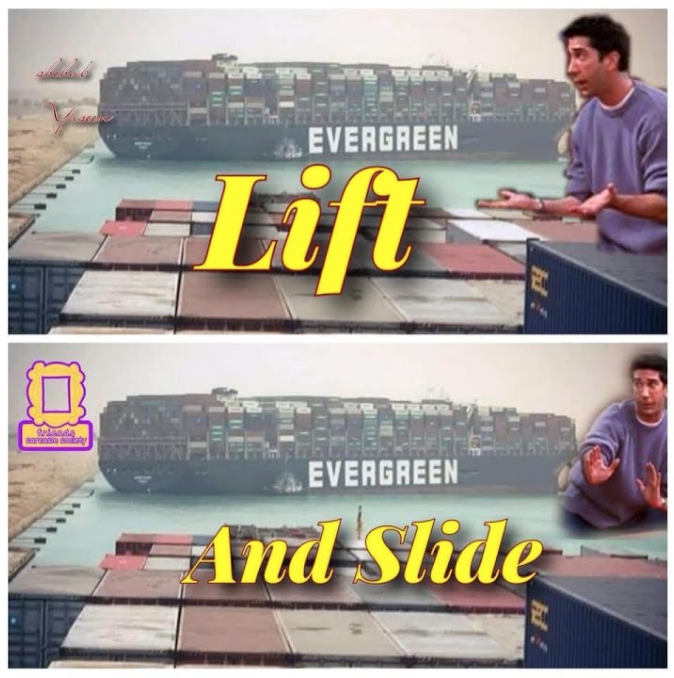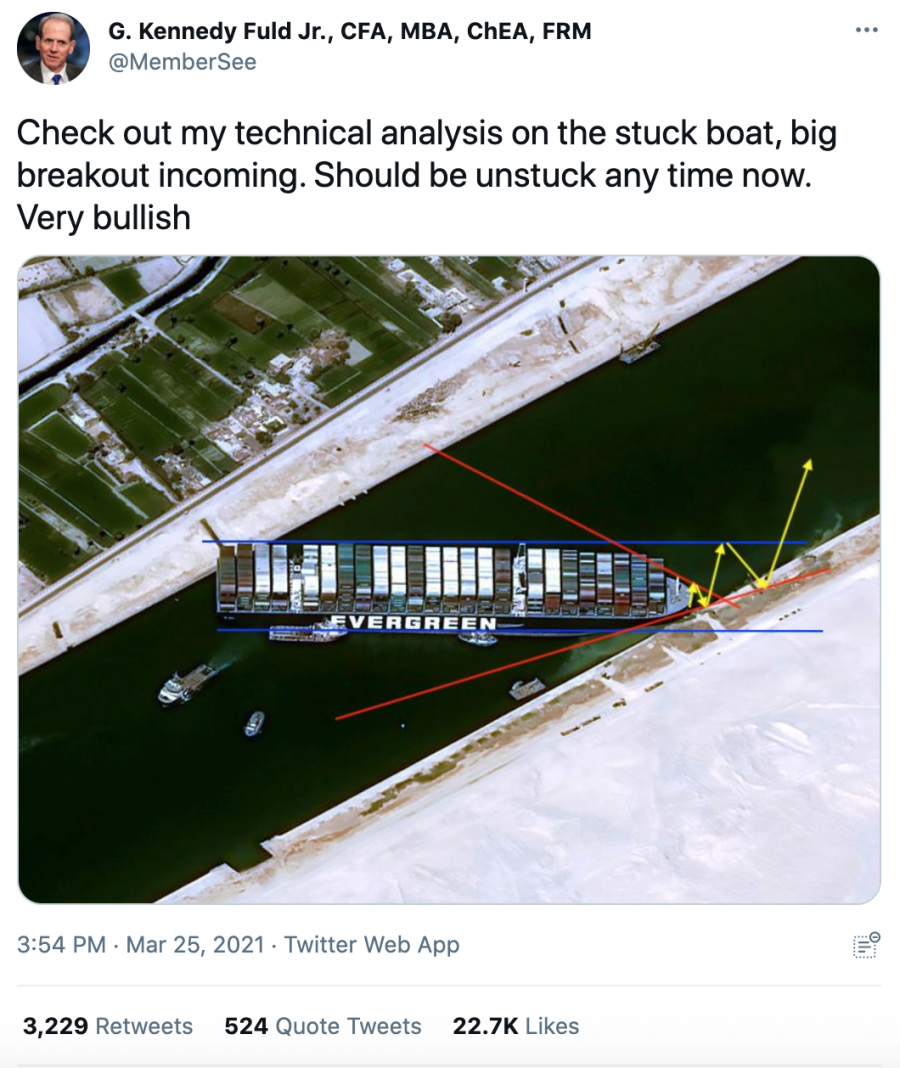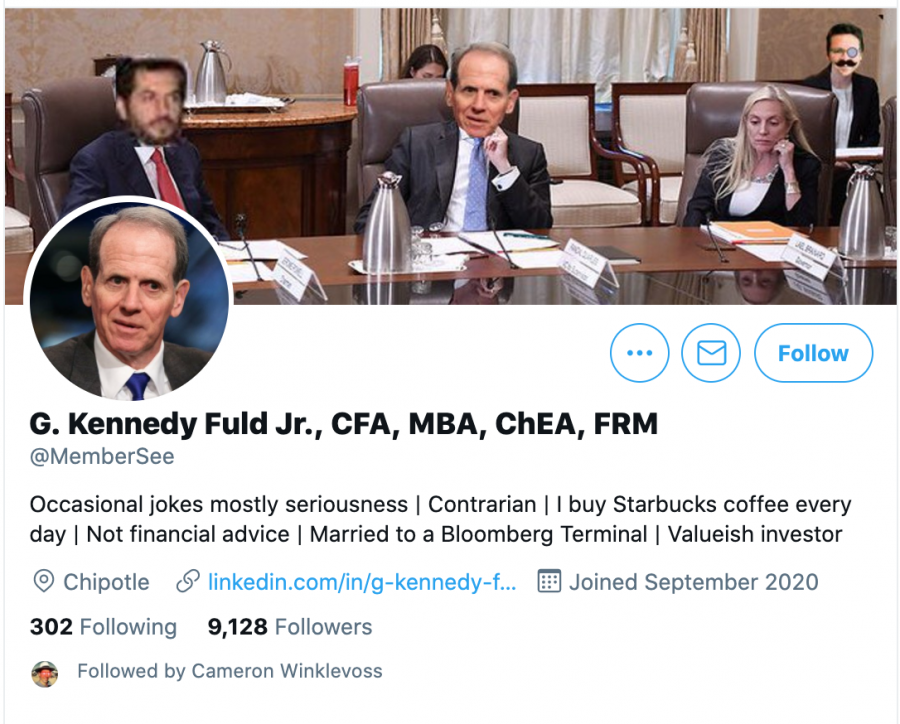
What the Suez Blockage can teach us about digital literacy
If there is one thing that is certain about human communication, it is that it varies greatly between continents, countries, cities, and especially cultures (Gumperz, 1982). While it is common knowledge that literacy is an important aspect of communication in the offline world, many people may not yet be aware that the online world requires its own unique literacy skills. Moreover, digital literacy is arguably an even more elaborate discipline than its offline counterpart. To communicate effectively in the online world, one must not only master offline literacies but also know the ins and outs of online culture, including the specific cultures of certain online groups. This was perfectly illustrated by the Suez Canal blockage earlier this year.
By analyzing memes about the 2021 Suez Canal obstruction, this article aims to examine how communication via online memes depends on digital literacies and what it means to become a “meme”-literate individual in a given niche. To make sense of this meme content, we will use the concept of multi-literacies (Cope & Kalantzis, 2009), Belshaw’s Essential elements of digital literacies, and Blommaert’s (2009) paper A market of accents.
Digital literacy and the Suez

Figure 1) The Ever Given blocking the Suez Canal on March 24.
On March, 23rd, 2021, one of the world's busiest trade routes, the Suez Canal, was blocked by the Ever Given, a 20,000 TEU container ship. The 400 meter long vessel was buffeted by high winds and became wedged in the waterway. With its bow and stern trapped in the canal banks, it blocked all navigation until it could be rescued.
The situation created a wave of viral memes across the internet - particularly on social media platforms like Instagram, Facebook, Reddit, and Twitter. Interestingly, it appears that various online groups all came up with their own interpretations of the Suez Blockade. Since a group usually uses a native form of communication or literacy, there are now hundreds, if not thousands of memes connected to this event - all of which feature distinct identity marks from different creators.
Cope & Kalantzis (2009) describe how humans constantly recreate and reinvent meaning and means of communication. Therefore meaning is often highly context-laden and individuals frequently have to adopt new literacies in order to make sense of communication within a specific group or environment.
“The way to develop digital literacies is progressive, not sequential.”
The concept of multi-literacies is also described by Dr. Doug Belshaw in his Ted Talk. Belshaw speaks of multiple digital literacies in the sense that in digital environments, meaning-making often depends on multiple aspects, such as context and negotiation.
According to Belshaw, meaning-making in the online world is a layered process that starts with the bigger picture and gradually becomes clearer as one adopts more digital literacies. In order for social media users to understand Suez blockage memes, one first needs to understand what online memes are, then the details and implications of this real-life event, and then the specific literacies of the online groups producing and sharing the memes. To actively and successfully create new memes, one has to have a sophisticated understanding of all these literacies.
“Lift and slide”
In the following two sections, we will take a look at two popular memes related to the incident. The first of these memes is related to the TV show Friends, also known as the Ross “Lift and slide”.

Figure 2) The "Lift and Slide" meme.
In season 7, episode one of Friends, Ross Geller, one of the main characters, buys a new sports car and invites his friends to see it and go for a ride. The problem is that he has gotten himself, or more specifically his car, stuck between a van and another car, making it impossible to drive. He decides that the best thing to do is lift the car and slide it to the side to get it out of this precarious situation.
Just as Ross’s car was stuck and could not maneuver its way out, the Ever Given also was stuck and could not get out by itself. So the solution, in Ross’s style, is to lift and slide the ship.
In order to make this connection and understand the “Lift and slide” meme, one needs to master several types of digital literacies or even a remix of literacies. Firstly, one needs to understand how online memes work in general to positively identify this post as a meme. However, to actually understand the meaning of this meme, one needs to be literate in Friends references and familiar with the fan community. Secondly, one needs to have background knowledge about what happened in the Suez Canal, why it is important, and how the situation is being dealt with. Lastly comes the remix of the different digital literacies that one combines, and how are they connected to form the joke or meme.
“Breakout incoming”

Figure 3) The "breakout incoming" meme on Twitter.
With more than 22,000 likes and over 3,200 retweets, a Tweet posted by Twitter user @MemberSee is undoubtedly among the most popular memes related to the Suez blockage on Twitter. Similar to hundreds of other social media users, @MemberSee, aka G. Kennedy Fuld Jr., has leveraged the virality of the Suez Blockage by recontextualizing it into a new idea that can only be understood by those who are literate in the online trading world. This remixing of ideas by using various literacies is what Belshaw describes as the core of digital literacy, or moving beyond ‘Elegant Consumption’.
The Tweet includes several layers of communication tools. Firstly, it uses language that is commonly used by online trading communities, such as the words “bullish” and “breakout.” Secondly, the remixed image of the Ever Given features several coloured lines and arrows. This resembles the work of a technical chart analyst, who analyzes price charts of assets in order to predict future changes in price. Consequently, to understand the meme to its full extent, one has to be literate in financial language and technical chart analysis.

Figure 4) Twitter Profile of @MemberSee.
Importantly, though, this example also demonstrates that mastering various digital literacies can equate to power and status (Blommaert, 2009). To someone who is not literate in financial language and does not have at least moderate knowledge about meme communities on social media, @MemberSee, or G. Kennedy Fuld Jr., may seem like a genuine and skilled financial analyst. In fact, @MemberSee features various identity emblems that commonly indicate a sophisticated position in the financial industry. This includes the abbreviations behind his user name, which stand for various financial degrees and titles, his literacy in financial language and chart analysis, as well as a link to his LinkedIn profile.
However, those who are literate in these aspects themselves can easily figure out that this profile is not what it seems. Upon closer inspection, it becomes evident that @MemberSee’s profile and tweets are riddled with clues indicating that he is indeed a troll account that focuses on posting meme content. Consequently, this means that @MemberSee is highly literate in another digital discipline: online trolling.
Combining multiple digital literacies can grant significant power and status.
The combination of digital literacies mastered by @MemberSee, including trading language and online trolling, combined with the recontextualization of a polarizing event, has allowed him to create an extremely popular and viral meme that has even been shared by some of the most sought-after influencers in the financial sector, such as entrepreneur Cameron Winklevoss. As a result, this case also demonstrates that combining multiple digital literacies can grant meaning-makers significant power and status in a given niche.
The bottom line
The Suez Blockade demonstrated that there is no universal digital literacy that can be learned to understand all communication in the online world. Instead, it illustrates that the digital world is a polycentric and super-diverse environment in which a virtually infinite number of literacies form and transform communication. One might be able to understand the meme of a group of which one is a member but to understand the meme of another group, one might have to learn an entirely new literacy.
When it comes to online communities, knowing the right language, identity discourses, and practices is key to make sense of a group's communication. Those who are willing to master the required literacies of a group can actively contribute to its discourse, for example, by creating satirical memes. Engaging in digital discourse and participating in the ongoing learning process of digital literacies can pay off by opening doors to new communities and rewarding meaning makers with power and status.
References
Blommaert, J. (2009). A market of accents. Language Policy, 8(3), 243-259.
Cope, B., & Kalantzis, M. (2009). “Multiliteracies”: New literacies, new learning. Pedagogies: An international journal, 4(3), 164-195.
Gumperz, J. J. (1982). Discourse Strategies: Studies in interactional sociolinguistics. Cambridge University Press.